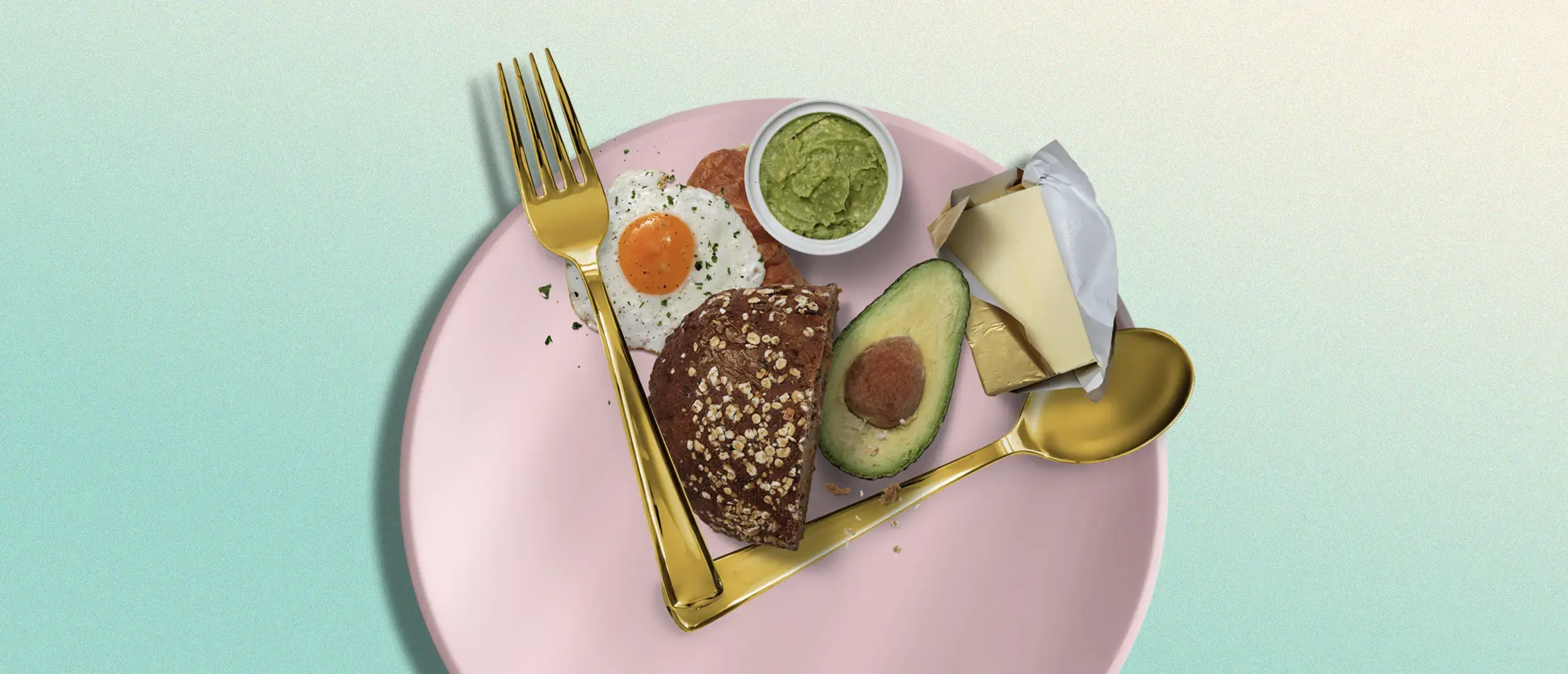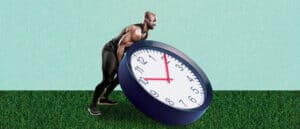The Fasting-Mimicking Diet Has All the Benefits of IF—Without Limiting When You Can Eat
- By Rebekah Harding
- March 6, 2024
S
everal longevity experts rave about the benefits of fasting—and for good reason. Research suggests that intermittent fasting can improve cellular aging and increase your lifespan by decreasing inflammation, improving blood glucose levels, and boosting stress resistance (1).
But some experts—like David Sinclair and Peter Attia—have opted for the fasting-mimicking diet (FMD), which may offer similar longevity benefits as intermittent fasting.
About the Expert:
Alix Turoff, M.S., R.D., C.P.T., is a registered dietitian, nutrition consultant, and certified personal trainer. She has a special interest in debunking unsustainable diets and diet culture myths.
What Is the Fasting-Mimicking Diet?
The fasting-mimicking diet was developed and popularized by Valter Longo, Ph.D., director of the Longevity Institute at the University of Southern California. He found this diet helped breast cancer patients bounce back after chemotherapy treatments faster by curbing DNA damage (2).
A fasting-mimicking diet provides the benefits of fasting without completely abstaining from food, according to Alix Turoff, M.S., R.D. This diet calls for low protein and carbohydrate intake with a moderate-to-high intake of unsaturated fats (like nuts, seeds, and certain vegetable oils). On FMD, you’ll only consume 700 to 1,100 calories per day for three to five days. After this cycle, you’ll return to eating your regular, balanced diet.
“The idea is to mimic the effects of a water-only fast—which includes reduced levels of glucose, insulin, and IGF-1 (a hormone involved in bone and muscle growth)—while still providing essential nutrients to minimize the stress and risks associated with complete fasting,” Turoff says. Cue ProLon (which stands for Pro-Longevity), a once a month, five-day FMD meal plan created by Longo in 2016.
“ProLon was created to make following a FMD protocol more doable,” Turoff explains. “It includes specific meals and snacks each day as well as supplements.”
How is the fasting-mimicking diet different from intermittent fasting?
While both eating patterns share many of the same benefits, the two differ greatly in practice. Intermittent fasting involves cycling between eating and fasting windows. For example, an intermittent faster may only eat within an eight hour window, but then fast for the other 16 hours of the day.
Unlike FMD, intermittent fasting doesn’t typically restrict the types of foods you can enjoy, according to Turoff.
Benefits of the Fasting-Mimicking Diet
Cellular rejuvenation
When you fast, your body recognizes the shortage in food and starts to use fatty acids and ketones (the chemical your liver makes when it breaks down fats) as fuel—instead of the glucose it usually gets from carbohydrates.
“This can trigger autophagy—the cleanup of old, worn-out cellular debris—which results in cellular rejuvenation and renewal,” Turoff explains. While FMD doesn’t require periods of fasting, eliminating carbs (similarly to the keto diet) can jumpstart the same process (3).
Autophagy triggered by the fasting-mimicking diet may be effective at staving off age-related diseases like Alzheimer’s and dementia, according to a 2023 clinical review (3).
Reduced biological age
While most people celebrate their chronological age on their birthdays, longevity experts are primarily focused on their biological age. Your biological age is measured with biomarkers like changes to your cellular health or DNA. These biomarkers can be improved (or worsened) with lifestyle factors like diet, exercise frequency, and toxin exposure.
Three monthly cycles of the fasting-mimicking diet—which includes following FMD for five days and a Mediterranean diet for 25 days—could reduce your biological age by 2.5 years, according to findings from a recent study in Nature Communications (4).
“Study participants who were most unhealthy at the start of the study benefited the most from repeated cycles of FMD,” Turoff notes. “That being said, there were a number of limitations in this study and more research is needed.”
Lower inflammation
Chronic inflammation is a major culprit behind age-related diseases like arthritis, Alzheimer’s, cancer, and diabetes (5). And the fasting-mimicking diet may decrease inflammation markers such as C-reactive protein, which is associated with disease risk, according to Turoff (6).
Research suggests the fasting-mimicking diet may also improve gut inflammation and help manage certain autoimmune disorders. According to a 2021 study on mice, the fasting-mimicking diet reduced multiple markers of irritable bowel disease and repaired damaged parts of the intestinal wall (7).
Risks of the Fasting-Mimicking Diet
The fasting-mimicking diet is may be a good option for people who want to reap the benefits of IF without opting for periods of non-eating. But—like all restrictive diets—FMD can also not be followed correctly, and may lead to disordered eating and unhealthy weight changes, notes Turoff.
“Weight cycling (losing and regaining weight) is correlated with negative physical and psychological health consequences,” Turoff warns. “If doing something like ProLon leads to more yo-yoing in weight, then it’s safe to assume you’re undoing any potential benefits for longevity.”
She also notes that if you have preexisting conditions or an eating disorder, take medication, are older than 70, or have an on-going infection, you should talk to your doctor before trying this diet.
Can you lose weight on the fasting-mimicking diet?
There are currently no studies comparing ProLon or FMD to more traditional diet plans for weight loss.
“The average weight loss on ProLon after three cycles (three months) is around 6 pounds (8),” says Turoff. “This could be achieved by something far less extreme.”
How to Try the Fasting-Mimicking Diet
Prepackaged ProLon (and ProLon-inspired) kits take the guesswork out of trying FMD, according to Turoff. These kits typically retail for $100 to $200 for a three to five day kit, which includes all of your meals and an eating plan. ProLon also includes supplements to address any potential nutrient deficiencies.
But what if you want to DIY your FMD plan? The FMD meals tend to follow five rules (9):
- Low calorie: Focus on including low-calorie, but nutrient-dense foods, like non-starchy vegetables such as leafy greens.
- Vegan: Avoid high-protein animal products, including dairy, to avoid breaking your fast.
- Minimal lectins: These carb-binding proteins are found in foods like pre-soaked beans and lentils. Some experts believe that lectins are inflammatory (10).
- No sugar: Ditch all sugar—even from fruit—to keep your body using ketones and fatty acids for energy.
- Only plant-based whole foods: Keep your favorite chips in the pantry while you try FMD. Avoid processed and ultra-processed foods, which tend to be high calorie and nutrient-poor.
Before making your own diet plan, Turoff suggests following up with an expert—like your physician or a licensed registered dietitian—to make sure your meals aren’t overly restrictive.
References
1. Longo, et al (2021). Intermittent and periodic fasting, longevity and disease.
2. Groot, et al (2020). Fasting mimicking diet as an adjunct to neoadjuvant chemotherapy for breast cancer in the multicentre randomized phase 2 DIRECT trial.
3. Boccardi, et al (2023). The Potential of Fasting-Mimicking Diet as a Preventive and Curative Strategy for Alzheimer’s Disease.
4. Brandhorst, et al (2024). Fasting-mimicking diet causes hepatic and blood markers changes indicating reduced biological age and disease risk.
5. Sanada, et al (2018). Source of Chronic Inflammation in Aging.
6. Venetsanopoulou, et al (2019). Fasting mimicking diets: A literature review of their impact on inflammatory arthritis.
7. Song, et al (2021). Intermittent administration of a fasting-mimicking diet reduces intestinal inflammation and promotes repair to ameliorate inflammatory bowel disease in mice.
8. ProLon. Fasting for Weight Loss.
9. ProLon. ProLon Nutrition Program.
10. Panacer, et al (2019). Dietary Lectin exclusion: The next big food trend?













